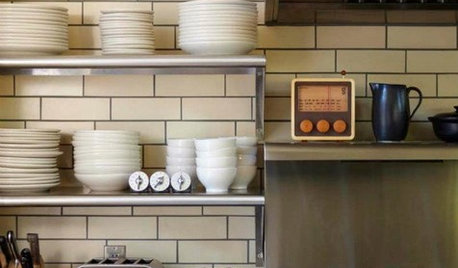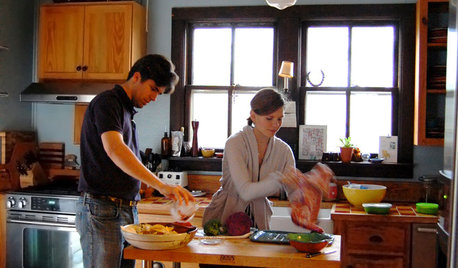First night of canning: a success! And, Q on brussels sprouts
bananastand
12 years ago
Related Stories

FEEL-GOOD HOMESimple Pleasures: 10 Ideas for a Buy-Less Month
Save money without feeling pinched by taking advantage of free resources and your own ingenuity
Full Story
HOLIDAYSSimple Pleasures: Welcoming the New Year
Got the champagne and party hats but stumped about what to do next? Try these festive entertaining ideas to ring in the new year
Full Story
KITCHEN DESIGNCreate Your Own Checklist for a Well-Stocked Kitchen
Personalize the kitchen with your own must-haves from our list of top cooking tools, small appliances, pots, pans and more
Full Story
EDIBLE GARDENSHouzz Call: What Did You Grow This Summer?
Let’s celebrate the homegrown fruits and vegetables of the season. Post your pictures and tell us about your harvest
Full Story
FARM YOUR YARDHouzz Call: Home Farmers, Show Us Your Edible Gardens
We want to see where your tomatoes, summer squashes and beautiful berries are growing this summer
Full Story
KITCHEN DESIGNHouzz Call: What’s Cooking in Your Kitchen?
Most of us turn to recipes, videos and culinary shows when we cook. Where do you set your cookbook, tablet or TV screen?
Full Story
DECORATING GUIDESAn Expat’s Guide to Making a Home Away From Home
How do you stay balanced when each foot is in a different culture? You take a stand where you hang your hat
Full Story
FALL GARDENING7 Reasons Not to Clean Up Your Fall Garden
Before you pluck and rake, consider wildlife, the health of your plants and your own right to relax
Full Story
ENTERTAINING8 Stress-Busting Tips for Hosting Small Gatherings
Make entertaining easy with these ideas for casual get-togethers
Full Story
GARDENING GUIDESWe Bust 4 More Native Plant Myths
Have you been taken in by these fallacies about gardening with native plants?
Full Story





digdirt2
readinglady
Related Professionals
Summit Landscape Architects & Landscape Designers · Woburn Landscape Contractors · Addison Landscape Contractors · Belmont Landscape Contractors · Englewood Landscape Contractors · Euclid Landscape Contractors · Florham Park Landscape Contractors · Mason Landscape Contractors · Mastic Beach Landscape Contractors · Natick Landscape Contractors · Ocoee Landscape Contractors · Vallejo Landscape Contractors · Winchester Landscape Contractors · Maplewood Landscape Contractors · Redford Driveway Installation & Maintenancetracydr
denninmi
bananastandOriginal Author
readinglady
bananastandOriginal Author
macybaby